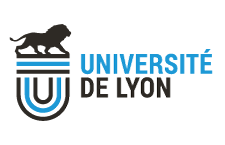WP-3
Radiobiology and modeling for innovative radiotherapy based on high-energy
carbon ions, photoactivation of high-Z elements (PAT-Z) and microbeam radiation therapy (MRT)
The technological innovation mandatory to treat radio-resistant tumors relies on the combination of targeting and increasing the cytotoxic effect in the tumor. Among innovative radiotherapies, hadrontherapy by carbon ions is at the stage of clinical assessment in Germany and Japan, while Radiation therapy by photoactivation of high-Z elements (PAT-Z) and microbeam radiation therapy (MRT) are at the phase of evaluation in animal models.
Carbon ion beams deposit a maximum of energy density abruptly at the end of their range (Bragg peak) and as a consequence enable highly conformal treatment of deep-sited tumors, while delivering minimal doses to surrounding healthy tissues.
Moreover, at an equivalent physical dose, carbon ions may induce more severe intracellular lesions than photons, such as complex DNA damages, thus leading to a greater destruction of cancer cells. They also display a higher effectiveness in curing hypoxic tumors, a suppressive effect on angiogenesis and on cell migration (metastasis).
Higher Relative Biological Efficiency (RBE) and better targeting enable hypofractionated treatment leading to increased survival, as observed by pioneering clinical studies. PAT-Z is based on the local increase of radiation dose delivered to the tumor cells, after interaction with absorbing elements such as platinum salts, gold or gadolinium particles with which the tumor has been previously charged.
Next to it, MRT that uses an array of microscopically thin X-ray beam delivering several octagray doses within a fraction of second while sparing normal tissues, is a promising alternative to radiosurgery in neuro-oncology .
Two models are currently incorporated in treatment planning systems (TPS) for carbon therapy: the Local Effect Model (LEM) in Germany, and the Microdosimetric Kinetic Model (MKM) in Japan. No model has been developed up to now for PAT-Z and MRT.
The aim of WP3 is to elucidate, quantify and predict the cellular events triggered by high energy carbon ions, PAT-Z and MRT at a multiscale level (from femtosecond to months, and from molecules to living tissues) to optimize the clinical transfer of these innovative radiotherapies. Beside experiments in living systems, radiobiology includes the development of irradiation platforms, methods and simulations for the analysis, acquisition, and prediction of data.
PRIMES thesis on WP3 themas:
GIMENEZ Paul (2012 - 2015) - Radiothérapie par photoactivation de nanopaticules (CEA-LAN)
KOTB Shady (2013 - 2016) - Nanoparticules théranostiques à base de Gadolinium : Optimisation et compréhension des mécanismes physiques et biologiques dans le traitement des tumeurs (ILM)
SIMONET Stéphanie (2014 - 2017) - Rôle du stress oxydant mitochondrial dans la réponse tumorale à une irradiation hadronique ou par photo-activation d’éléments de Z élevé (PAT-Z) (LRCM)
WP3 leaders
Claire Rodriguez-Lafrasse - LRCM
Michael Beuve - IPNL
Involved teams
- IPNL
- LPC
- LRCM
- GIN
- LAN
- LPCML
- ENS-LHc



 Welcome
Welcome PRES Lyon
PRES Lyon Contact us
Contact us Archives
Archives WebAdmin
WebAdmin